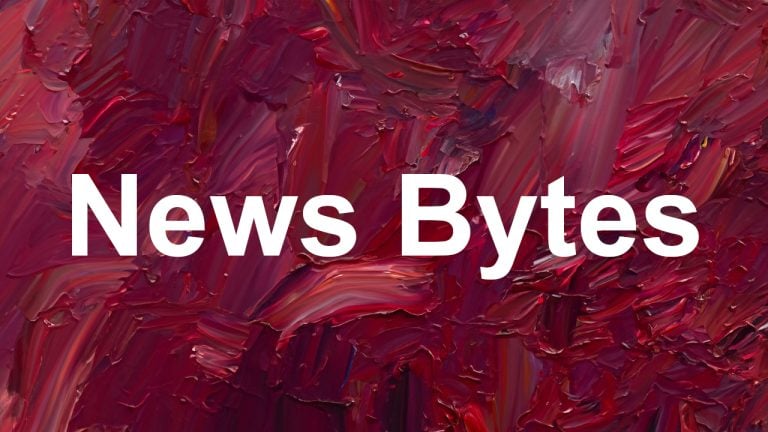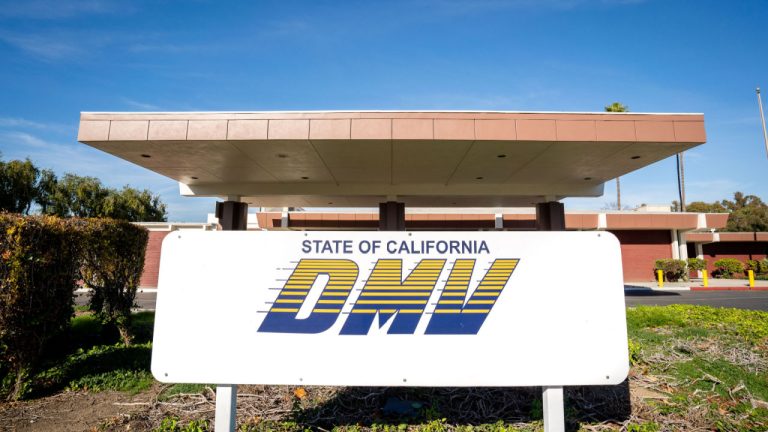
The founder of Tezos (XTZ) and his wife are taking the IRS to court once again over the agency’s treatment of their staked XTZ tokens. In a new complaint filed with a Tennessee Federal court, Josh and Jessica Jarrett contend that newly minted tokens from staking should only be treated as taxable if they are […]
The post Tezos Founder Josh Jarrett and Spouse Launch New IRS Lawsuit Over Staked XTZ Tokens appeared first on The Daily Hodl.
Manchester United's Web3 game on Tezos could revolutionize fan engagement and digital collectibles in sports, enhancing interactive experiences.
The post Manchester United and Tezos team up to launch new Web3 football game appeared first on Crypto Briefing.
 Tezos X announced the development of Jstz (pronounced “justice”), a Layer 2 rollup that will allow developers to use Javascript, a programming language used by nearly 23 million developers worldwide, on the blockchain. This move is aimed at scaling the utility of blockchain and attracting more developers to the space by removing the hefty barrier […]
Tezos X announced the development of Jstz (pronounced “justice”), a Layer 2 rollup that will allow developers to use Javascript, a programming language used by nearly 23 million developers worldwide, on the blockchain. This move is aimed at scaling the utility of blockchain and attracting more developers to the space by removing the hefty barrier […] Tezos, a blockchain known for its onchain governance system, has activated its 16th protocol upgrade, Paris, on mainnet on June 4th, 2024. This upgrade introduces the Data Availability Layer (DAL), which boosts Layer 2 throughput and unlocks new use cases in gaming, ticketing, and services requiring high-speed transactions. The upgrade also reduces block times to […]
Tezos, a blockchain known for its onchain governance system, has activated its 16th protocol upgrade, Paris, on mainnet on June 4th, 2024. This upgrade introduces the Data Availability Layer (DAL), which boosts Layer 2 throughput and unlocks new use cases in gaming, ticketing, and services requiring high-speed transactions. The upgrade also reduces block times to […]
Bitcoin’s failed breakout to the upside hints that range-bound price action could be set to continue. Meanwhile, TON, LINK, MKR and XTZ begin to perk up.
Bitcoin (BTC) tried to break out of its range last week, but the bulls could not sustain the higher levels. Bitcoin is back inside the range and is trading near the $26,000 level. The price action of the past few days has formed two successive Doji candlestick patterns on the weekly chart, indicating uncertainty about the next directional move.
Although it is difficult to predict the direction of the breakout, the downside may be limited in the near term on expectations that the United States Securities and Exchange Commission (SEC) may eventually approve one or more pending applications for a spot Bitcoin exchange-traded fund. Former commission chair Jay Clayton sounded confident when he said in a recent interview that “an approval is inevitable.”

In the near term, it is difficult to pinpoint a specific catalyst that could shake Bitcoin out of its range. The lack of clarity about Bitcoin’s next trending move has kept most major altcoins under pressure.
Only a handful of altcoins are showing signs of strength in the short term. Let’s study the charts of top-5 cryptocurrencies that may start a rally if they break above their respective overhead resistance levels.
Bitcoin is back inside the $24,800 to $26,833 range, but a positive sign is that the bulls continue to buy the dips as seen from the long tail on the Sep. 1 candlestick.

Although the downsloping moving averages indicate advantage to bears, the gradually recovering relative strength index (RSI) shows that the bearish momentum may be weakening. The first sign of strength will be a break and close above the range at $26,833. If that happens, the BTC/USDT pair could retest the Aug. 29 intraday high of $28,142.
If bears want to seize control, they will have to sink and sustain the price below $24,800. This is going to be a tough task as the bulls are likely to defend the level with all their might. Still, if the bears prevail, the pair could plunge to $20,000. There is a minor support at $24,000 but it may not halt the decline.

The bears tried to pull the price below the immediate support at $25,300 but the bulls held their ground. Buyers will next try to build upon their strength by driving the price above the 20-exponential moving average. If they do that, it will indicate the start of a stronger recovery.
The 50-day simple moving average may act as a roadblock but it is likely to be crossed. That could clear the path for a possible rally to the overhead resistance at $26,833.
Sellers are likely to have other plans. They will try to sink the price below $25,300 and challenge the vital support at $24,800.
Toncoin (TON) is in an uptrend but the bears are trying to halt the up-move near the overhead resistance at $2.07.

Both moving averages have turned up, indicating advantage to buyers but the overbought levels on the RSI suggest that a minor correction or consolidation is possible. If the bulls do not give up much ground from the current level, the likelihood of a rally above $2.07 increases. The TON/USDT pair could then soar to $2.40.
Contrarily, a deeper correction could pull the price to the 20-day EMA ($1.58). A strong bounce off this level will suggest that the sentiment has turned positive and traders are buying on dips. The trend will turn negative if the 20-day EMA support cracks.

The 4-hour chart shows that the bulls have been buying the pullback to the 20-EMA. This remains the key level to watch out for. If the price rebounds off the 20-EMA with strength, the pair could retest the local high at $1.98. A break above it could challenge the resistance at $2.07.
On the contrary, if the 20-EMA support breaks down, it will indicate that traders are rushing to the exit. That could start a deeper pullback toward the 50-SMA. A bounce off this level could face selling at the 20-EMA but if this roadblock is cleared, it will suggest that bulls are back in the driver’s seat.
Chainlink (LINK) has been trading inside a large range between $5.50 and $9.50 for the past several months. The bears pulled the price below the support of the range on June 10 but they could not sustain the lower levels.

The LINK/USDT pair dropped close to the support of the range on Aug. 17 but the bulls bought this dip as seen from the long tail on the candlestick. Buyers are trying to start a recovery but are facing resistance near the 20-day EMA ($6.24). Hence, this becomes an important level to look out for.
If buyers propel the price above the 20-day EMA, the pair could start its journey toward the 50-day SMA ($6.95). There is a minor resistance at $6.40 but it is likely to be crossed.
On the contrary, if the price turns down sharply from the 20-day EMA, it will suggest that the sentiment remains negative and traders are selling on rallies. That could pull the price down to $5.50.

The moving averages have flattened out on the 4-hour chart and the RSI is near the midpoint. This suggests that the selling pressure is reducing. Buyers will have to kick the price above $6.40 to start a new up-move. The pair could then rise to $6.87 and later to $7.07.
Alternatively, if the price turns down from $6.40, it will signal that bears are selling on rallies. That may keep the pair range-bound between $5.50 and $6.40 for a while longer.
Related: Bitcoin chart highlights $24.7K as analyst says ‘nothing has changed’
Maker (MKR) has taken support near $1,000 and is attempting to resume its uptrend. The bulls are facing resistance at the downtrend line but a positive sign is that they have kept the price above the 20-day EMA ($1,107).

If the price turns up from the current level, it will suggest that the sentiment has turned positive and traders are viewing dips as a buying opportunity. The bulls will then again try to push the price to $1,370.
Instead, if the price continues lower and breaks below the 20-day EMA, it will signal that the bears are fiercely defending the downtrend line. The MKR/USDT pair may then slump to the strong support at $980 and eventually to $860.

The 4-hour chart shows that the bulls pushed the price above the downtrend line but they are struggling to sustain the higher levels. This indicates that the bears have not yet given up and they continue to sell on rallies.
The 20-EMA is witnessing a tough battle between the bulls and the bears. If the price rebounds off this level, the bulls will make one more attempt to overcome the obstacle at $1,186 and then at $1,227. If this zone is scaled, the rally could reach $1,280.
Conversely, if the price sustains below the 20-EMA, it could open the gates for a possible decline to the 50-SMA and then to $1,040.
Tezos (XTZ) has been witnessing a tussle between the bulls and the bears near the strong support at $0.70. The failure of the bears to sink and sustain the price below this level indicates buying at lower levels.

The downsloping moving averages indicate advantage to bears but the rising RSI suggests that the bearish momentum is reducing. A close above the 20-day EMA ($0.71) will be the first sign of strength. That could pave the way for a rally to the downtrend line.
This level may act as a formidable hurdle but if the bulls overcome it, the XTZ/USDT pair may start a new up-move. The pair could first rally to $0.94 and subsequently to $1.04. This positive view will invalidate if the price skids and sustains below $0.66.

The 4-hour chart shows that the price is consolidating between $0.69 and $0.66. The crisscrossing moving averages and the RSI just below the midpoint suggest that bears have a slight edge. Sellers will try to drag the price to the strong support at $0.66. If this level crumbles, the pair may start the next leg of the downtrend to $0.61.
On the other hand, if the price turns up and rises above $0.69, it will indicate sold buying at lower levels. The pair could then surge to the overhead resistance at $0.74. Buyers will have to thrust the price above the downtrend line to signal the start of a new up-move.
This article does not contain investment advice or recommendations. Every investment and trading move involves risk, and readers should conduct their own research when making a decision.

Bitcoin’s failed breakout to the upside shows that the range-bound action could continue for some time but that may not hinder the bullish possibilities in TON, LINK, MKR, and XTZ.
Bitcoin (BTC) tried to break out of its range in the first half of last week but the bulls could not sustain the higher levels. Bitcoin is back inside the range and is trading near the $26,000 level.
The price action of the past few days has formed two successive Doji candlestick patterns on the weekly chart, indicating uncertainty about the next directional move.
Although it is difficult to predict the direction of the breakout, the downside could be limited in the near term on expectations that the United States Securities and Exchange Commission (SEC) may eventually approve one or more pending applications for a spot Bitcoin exchange-traded fund.
Former commission chair Jay Clayton sounded confident when he said in a recent interview that “an approval is inevitable.”

In the near term, it is difficult to pinpoint a specific catalyst that could shake Bitcoin out of its range. The lack of clarity about Bitcoin’s next trending move has kept most major altcoins under pressure.
Only a handful of altcoins are showing signs of strength in the short term. Let’s study the charts of top-five cryptocurrencies that may start a rally if they break above their respective overhead resistance levels.
Bitcoin is back inside the $24,800 to $26,833 range, but a positive sign is that the bulls continue to buy the dips as seen from the long tail on the Sep. 1 candlestick.

Although the downsloping moving averages indicate advantage to bears, the gradually recovering relative strength index (RSI) shows that the bearish momentum may be weakening. The first sign of strength will be a break and close above the range at $26,833. If that happens, the BTC/USDT pair could retest the Aug. 29 intraday high of $28,142.
If bears want to seize control, they will have to sink and sustain the price below $24,800. This is going to be tough as the bulls are likely to defend the level with all their might. Still, if the bears prevail, the pair can plunge to $20,000. There is a minor support at $24,000 but it may not halt the decline.

The bears tried to pull the price below the immediate support at $25,300 but the bulls held their ground. Buyers will next try to strengthen their position by driving the price above the 20-exponential moving average. If they do that, it will indicate the start of a stronger recovery.
The 50-day simple moving average may act as a roadblock but it is expected to be crossed. The pair could then rally to the overhead resistance at $26,833.
Sellers are likely to have other plans. They will try to sink the price below $25,300 and challenge the vital support at $24,800.
Toncoin (TON) is in an uptrend but the bears are trying to halt the up-move near the overhead resistance at $2.07.

Both moving averages have turned up, indicating advantage to buyers but the overbought levels on the RSI suggest that a minor correction or consolidation is possible. If the bulls do not give up much ground from the current level, the likelihood of a rally above $2.07 increases. The TON/USDT pair could then soar to $2.40.
Contrarily, a deeper correction may pull the price to the 20-day EMA ($1.61). A strong bounce off this level will suggest that the sentiment remains positive and traders are buying on dips. The trend will turn negative if the 20-day EMA support cracks.

The 4-hour chart shows that the bulls have been buying the pullback to the 20-EMA. Buyers will have to push the price above $1.98 to signal the resumption of the uptrend but the bears may not give up easily.
Sellers will try to pull the price below the 20-EMA. If they manage to do that, the pair could start a deeper pullback toward the 50-SMA. A bounce off this level is likely to face selling at the 20-EMA but if this roadblock is cleared, it will suggest that bulls are back in the driver’s seat.
Chainlink (LINK) has been trading inside a large range between $5.50 and $9.50 for the past several months. The bears pulled the price below the support of the range on June 10 but they could not sustain the lower levels.

The LINK/USDT pair dropped close to the support of the range on Aug. 17 but the bulls bought this dip as seen from the long tail on the day’s candlestick. Buyers are trying to start a recovery but are facing resistance near the 20-day EMA ($6.23). Hence, this becomes an important level to look out for.
If buyers propel the price above the 20-day EMA, the pair can start its journey toward the 50-day SMA ($6.94). There is a minor resistance at $6.40 but it is likely to be crossed.
On the contrary, if the price turns down sharply from the 20-day EMA, it will suggest that the sentiment remains negative and traders are selling on rallies. That could pull the price down to $5.50.

The moving averages have flattened out on the 4-hour chart and the RSI is just above the midpoint. This suggests that the selling pressure is reducing. Buyers will have to kick the price above $6.40 to start a new up-move. The pair could first rise to $6.87 and later to $7.07.
Alternatively, if the price turns down from $6.40, it will signal that bears are selling on rallies. That may keep the pair range-bound between $5.50 and $6.40 for a while longer.
Related: Shibarium hits 1M wallets amid meteoric growth, SHIB yet to catch up
Maker (MKR) has taken support near $1,000 but the bulls are facing solid resistance from the bears near the downtrend line.

The bulls repeatedly pushed the price above the downtrend line in the past few days but they failed to sustain the higher levels. A minor positive is that buyers have not given up much ground, which suggests that traders are not dumping their positions in a hurry.
If the price turns up and closes above the downtrend line, it will suggest that buyers are back in the game. The positive momentum is likely to pick up after buyers kick the price above $1,227. The pair may then rally to $1,370.
Instead, if the price sustains below the 20-day EMA ($1,106), it will suggest that bears have the upper hand. The pair could then slump to the strong support at $980.

The 4-hour chart shows that the bulls pushed the price above the downtrend line but they could not sustain the higher levels. This indicates that the bears have not given up and they continue to sell on rallies.
The price has plunged to the 50-SMA, which is an important level to keep an eye on. If the price turns up from the current level, the bulls will again try to overcome the obstacle at $1,186 and then at $1,227. If this zone is scaled, the rally could reach $1,280.
Conversely, if the price sustains below the 50-SMA, it will open the gates for a potential decline to $1,040 and eventually to $980.
Tezos (XTZ) has been witnessing a tussle between the bulls and the bears near the strong support at $0.70. The failure of the bears to sink and sustain the price below this level indicates buying at lower levels.

The downsloping moving averages indicate advantage to bears but the rising RSI suggests that the bearish momentum is reducing. A close above the 20-day EMA ($0.71) will be the first sign of strength. That could pave the way for a rally to the downtrend line.
This level is likely to act as a formidable hurdle but if the bulls overcome it, the XTZ/USDT pair may start a new up-move. The pair can first rally to $0.94 and subsequently to $1.04. This positive view will invalidate if the price skids and sustains below $0.66.

The 4-hour chart shows that the price is consolidating between $0.70 and $0.66. The crisscrossing moving averages and the RSI near the midpoint indicate a balance between supply and demand.
If the price rises above $0.70, the advantage will tilt in favor of the bulls. The pair could then surge to the overhead resistance at $0.74. The advantage will tilt in favor of the bears if they sink the price below $0.68. That is likely to result in a retest of the support at $0.66. If this level crumbles, the pair may start the next leg of the downtrend to $0.61.
This article does not contain investment advice or recommendations. Every investment and trading move involves risk, and readers should conduct their own research when making a decision.
 Google Cloud, the remote services division of the software giant, has announced a partnership with blockchain company Tezos to become a block validator (“baker”) in its network. As part of this partnership, Google Cloud will also offer Tezos validation services through its platform, allowing easier deployment for customers worldwide. Google Cloud Partners With Tezos Google […]
Google Cloud, the remote services division of the software giant, has announced a partnership with blockchain company Tezos to become a block validator (“baker”) in its network. As part of this partnership, Google Cloud will also offer Tezos validation services through its platform, allowing easier deployment for customers worldwide. Google Cloud Partners With Tezos Google […]
The partnership will see Google Cloud becoming a validator on the Tezos network.
Google's cloud computing arm has added another string to its Web3 bow, with a new partnership to see it becoming a network validator on the Tezos blockchain.
On Feb. 22, Tezos Foundation, a Swiss non-profit foundation supporting the Tezos blockchain announced it has teamed up with Google Cloud which will allow customers of the cloud computing business to deploy Tezos nodes and build Web3 applications on the blockchain.
Tezos is a blockchain-based smart contract platform used to power decentralized applications, similar to Ethereum, Cardano and among others. Corporates that have used Tezos include gaming giant Ubisoft and the California Department of Motor Vehicles.
Big news! @googlecloud is now an official Tezos baker, giving Google Cloud customers access to Tezos’ #blockchain technology. Looking forward to seeing how this partnership unfolds for the Tezos community https://t.co/uRs1xR0TnA
— Tezos (@tezos) February 22, 2023
This partnership also will make it possible for companies and developers to host and deploy RPC (Remote Procedure Call) nodes for Web3 applications using the Tezos blockchain and Google Cloud's infrastructure.
The Tezos Foundation will provide new and existing Google Cloud customers access to its corporate baking program. Through the program, Tezos will offer Google Cloud customers that are interested in building Web3 applications, easy deployment of nodes and indexers on the Tezos protocol.
The partnership is also set to provide select Tezos incubator startups with Google Cloud credits and mentorship via the Google for Startups Cloud Program.
“At Google Cloud, we’re providing secure and reliable infrastructure for Web3 founders and developers to innovate and scale their applications,” said James Tromans, Engineering Director, Web3 at Google Cloud.
Meanwhile, Tezos Foundation's Chief Commercial Officer, Mason Edwards, said the partnership was a step toward achieving institutional adoption and mass-market opportunities for Web3 technology.
Related: California DMV to digitize car title management system via Tezos
In January 2022, Google Cloud established a dedicated team for digital assets, aimed at facilitating the growth and advancement of the blockchain ecosystem. The team's primary objective was to assist Google Cloud's clients in generating, exchanging, preserving value, and introducing novel products on blockchain-powered platforms
In October 2022, the Near Foundation unveiled a new collaboration between Near Protocol and Google Cloud. The partnership was set to offer infrastructural support for Near's Web3 startup platform, Pagoda.

California DMV’s chief digital officer Ajay Gupta emphasized that the agency is looking to modernize its current systems and bring greater transparency to car title transfers.
The California Department of Motor Vehicles (DMV) is testing out the digitization of car titles and title transfers via a private Tezos blockchain.
The move is part of a collaboration between the California DMV, Tezos and blockchain software firm Oxhead Alpha, with the latter announcing t successful proof-of-concept on Jan. 25.
The California DMV has tapped Oxhead Alpha to build on a private Tezos testnet that it has dubbed a “shadow ledger.” It is essentially designed to become a blockchain-based replication of the agency’s current database.
The California DMV’s chief digital officer Ajay Gupta told Fortune on Jan. 26 that the agency is looking to have the shadow ledger ironed out within the next three months.
Following on from that, it is looking to roll out applications such as digital wallets to hold and transfer NFT car titles, with the DMV acting as a middleman to oversee such operations.
“The DMV’s perception of lagging behind should definitely change,” Gupta told Forbes.
Oxhead Alpha’s president Andrew Smith outlined that the California DMV’s blockchain initiative will serve a wide range of use cases for the agency, particularly concerning the modernization of its current paper-based systems.
Smith highlighted examples such as transaction fraud, in which car sellers hide key information about the vehicle's condition to offload a dud or “lemon” onto unsuspecting buyers.
While faulty vehicles have a special designation on their titles in California, Smith noted that sellers can move the car over to another state and hide the faulty designations with relative ease.
With the use of blockchain-based record keeping, however, and with other DMVs potentially adopting the tech also, it would be much easier to digital track the actual history of vehicles, Smith suggested.
“As far as the benefit for having a persistent digital title, this is a very obvious use case,” he said.
Commenting on why Tezos was a good fit for the DMV, Smith outlined in the firm’s Jan. 25 announcement that the blockchain “solves some of the really hard problems in blockchain in an elegant way.”
“The combination of responsible consensus, on-chain governance, and institutional grade security makes Tezos a great platform for delivering production-ready solutions,” he said.
Related: Venture capital investments into blockchain continue to free-fall: Report
The move from the California DMV is likely to be followed by others in the state moving forward. In May 2022, California Governor Gavin Newsom signed an executive order to direct and explore opportunities for blockchain tech integrations with state government agencies.
“California is a global hub of innovation, and we’re setting up the state for success with this emerging technology — spurring responsible innovation, protecting consumers and leveraging this technology for the public good,” said the governor.
 The Department of Motor Vehicles (DMV) in California is running a project to digitize all of its titles and put them on a blockchain. The project, which will use the Tezos blockchain and has the assistance of Oxhead Alpha, a crypto dev company, aims to allow users to transfer titles as NFTs in the future. […]
The Department of Motor Vehicles (DMV) in California is running a project to digitize all of its titles and put them on a blockchain. The project, which will use the Tezos blockchain and has the assistance of Oxhead Alpha, a crypto dev company, aims to allow users to transfer titles as NFTs in the future. […]